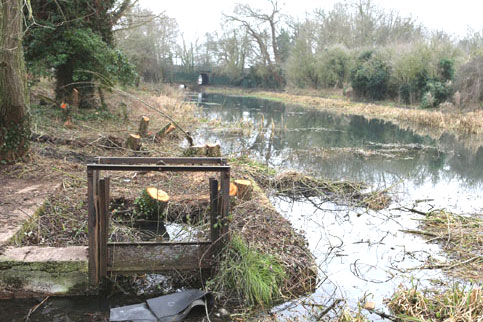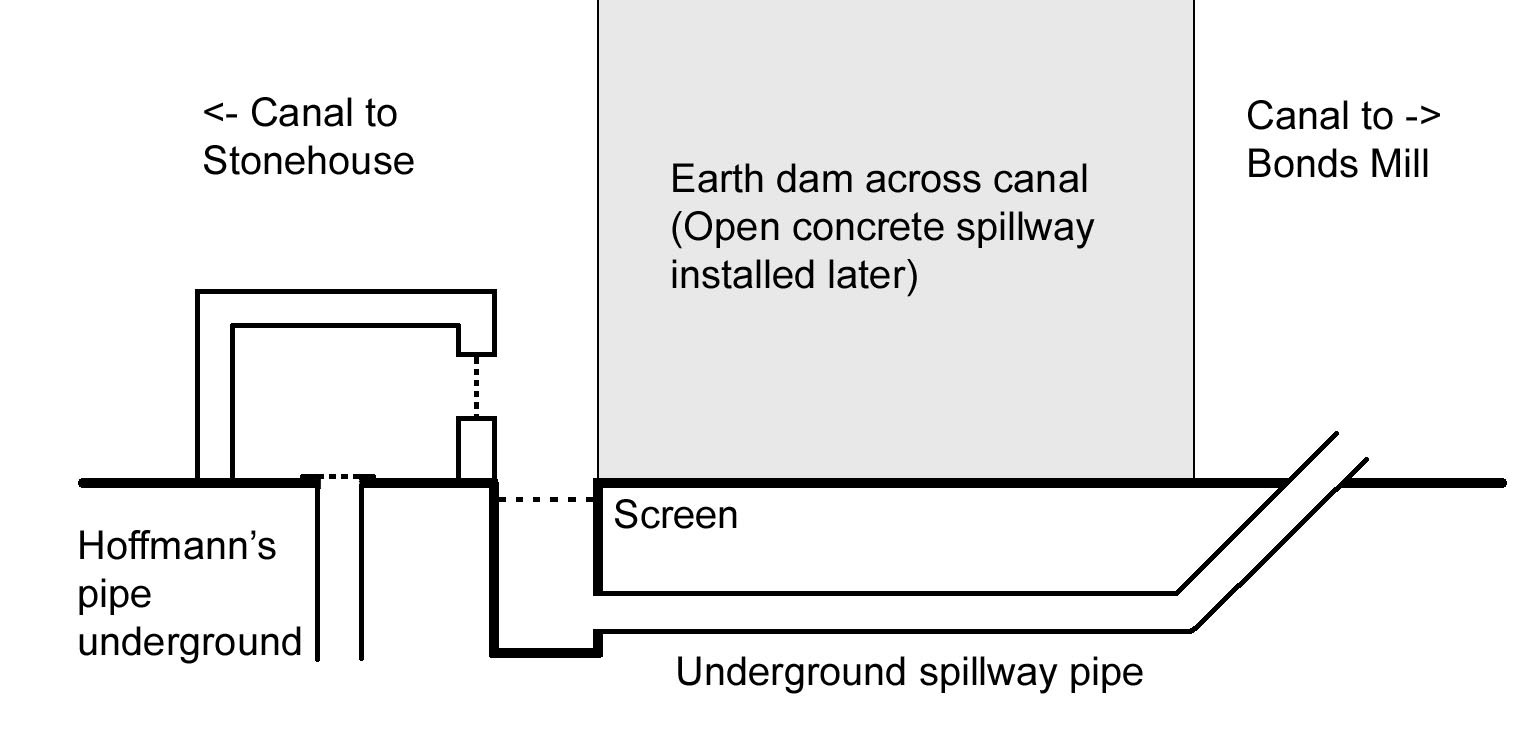Hugh Conway-Jones outlines the role of the canal in supplying water to Hoffmann's ball bearing factory at Stonehouse. (This article was originally published in the Trow magazine, Summer 2023.)


Hoffmann's factory was set up on the north side of the main road in the early years of the Second World War as there was concern about bombs damaging their main works at Chelmsford. All the water needed for generating steam for the factory was to come from the canal, and a water intake site was established 130 yards north-west of the Midland Railway Bridge. An underground pipe linked this intake with a reservoir on the factory site which also received rainwater from the roof of the factory. Water for the works was pumped from the reservoir and, when needed, excess water could be returned through the same pipe to the canal.
Hoffmann's started drawing water from the canal in 1942, and this enabled them to produce huge quantities of vital bearings for the war effort. The inlet to the pipe was protected by an open concrete enclosure with a perforated plate in one side that could be raised in a frame for cleaning. Each day, an employee from the boiler house visited the canal to check that there was no obstruction to the inlet and that the level and quality of the canal water was as it should be.


In the 1950s, the water supply along the canal was threatened when the Severn River Board took over the eastern end of the canal and converted it into a river to ease flooding between Stroud and Dudbridge. Subsequent negotiations led to a new feed to the canal being created at Ryeford, and a new agreement with Hoffmann's was signed in 1958. As there was some concern about the integrity of the towpath embankment to the west of the intake, and the need for the water was so vital, an earth dam was built across the canal immediately west of the inlet to isolate the length of concern from the water supply arrangements. To avoid any chance of the dam being overtopped, a channel was cut into the north bank of the canal and an underground concrete pipe provided a spillway around the dam.
One evening in the middle of winter, the Secretary of the Stroudwater Company was called out to investigate a rise in water level, and he found that the entrance to the piped spillway was blocked with an oil drum, presumably put there by children. After gathering waders and torches, he and a friend had to go into the freezing water up to their waists to remove the blockage. Following this, a new open-topped concrete spillway was installed across the top of the dam that could not be so easily blocked.
Further problems with the supply of water followed. Pipes through the embankment that replaced Stonehouse Bridge were regularly blocked by reeds. Dredging silt from the canal had to be stopped when the mud dumped on a nearby field started to run downhill. When the river level was low in summer, the feed at Ryeford had to be supplemented by pumping, and the feed was stopped completely for a time when the old sluice at Ryeford collapsed. It is a tribute to the canal management at that time that they kept the water flowing and so earned a useful income that could finance small amenity projects, including grants to the Canal Trust.


In 1988, the factory stopped needing water from the canal, and the pipe under the field then just became a means of draining rain water from the factory into the canal. The dam remained in place until 2022, when the section near the towpath was cut through by one of the Canal Trust's dredgers. The far side of the dam has been left in situ, including the remains of the concrete spillway.
For first agreement with Hoffmann's 1942, see D1180/8/54.
Memories of checking the inlet to the pipe from Adrian Shipton.
For proposal and plan of dam, see D1180/acc12872/box5/2.
For second agreement with Hoffmann's 1958, see D1180/8/54.
For blockage by oil drum, see D1180/acc12569/Box 5/11.
For later history, see D1180/acc12872/box5/2.
For agreement to drain water into canal 1993, see D1180/8/54.
For opening a way through the dam, see Trow Summer 2023.